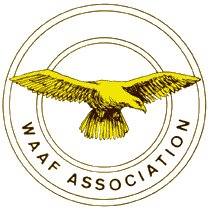
Women in the War
Lady Renie Adams
Reminiscences of a WAAF Officer
![]()

 |
Women in the War Lady Renie Adams Reminiscences of a WAAF Officer
|
||
 |
|||
| |
This account was written by Lady Renie Adams in November 1998 and sent to Dr W H Penley for his Radar Archive. Dr Penley has collected the written reminiscences of many people who worked for TRE, Telecommunications Reserach Establishment, at Worth Matravers. Lady Renie Adams' account, along with many others can be found on the Penley Radar Archives website. Click here to visit this site. Reminiscences of a WAAF Officer My arrival at Swanage in 1941, along with nineteen other women all dressed in Air Force blue and sporting a single narrow white band on our cuff showing the rank of Assistant Section Officer, was the final stage in a six month training course on a highly secret weapon. We had been chosen by Watson Watt himself from about 200 science graduates for this special work, sent on an officers training course at Loughborough, on an RDF (Radio Direction Finding) operators course to Cranwell, and then to an operating CH station. I had been with a colleague to Ventnor which had been 'off the air' for more than a few hours. Strangely enough, although all the stations on the coast to the east had been bombed Worth Matravers, which seemed to be next on the list, had luckily escaped bombing on that occasion. These stations were easily identified from the air by their line of high pylons and concrete blocks nearby which housed the transmitter and receiver.
Sir Robert Watson-Watt Here we learned about the chain of home stations all round the South East and Southern coast that had been busy 24 hours a day keeping watch and tracking enemy aircraft. Each operator was directly connected by a telephone headset to the Filter Room to which they reported all aircraft within coverage. The Filter Room received information from several CH stations and here it was evaluated, given a code name hostile or friendly, and then passed directly to the Operations room where it was plotted on a large map and could be seen by the Chief of Staff conducting operations.
Renie met her husband John, who also worked at TRE, at a 'hop' in Swanage. Dr Penley has kindly allowed us to use this picture from the Penley Radar Archives website. Click here to visit this site. We learned of some of the difficulties that had been experienced by the severe radio jamming put out by the Germans during the air raids on London and other towns and cities and some of the mistakes in identification of aircraft, and we were told that all these were being counteracted by the 'boffins', mysterious people usually civilians, who appeared from time to time with advice and sometimes extra equipment to help keep the station 'on the air'. The operators told us of times when aircraft had been plotted miles off course over the sea because of difficulties of navigating at night. This was completely transformed later by the inventions of the research staff at TRE who enabled the Pathfinder Squadrons to direct our bomber force. When we were posted to TRE Worth Matravers for a three-month course on electronics, we were last to meet some of these 'boffins' who were at the centre of the research on what is universally known as RADAR. Our commanding officer was a Flight Lieutenant Ratcliffe and we were taken to our billets at the Grand Hotel Swanage. We were to have very special treatment. We were soon taken to Forres School, a prep school that had been evacuated during the war. It was now a school under the direction of a J A Ratcliffe, specialising in courses mostly for operational personnel. We soon found out that we had come to a unique place. Scores of physicists all working on RADAR research had been stationed in the town and occupied labs in barracks up at Worth Matravers, or in empty school buildings, wherever they could be found. Many were billeted with local residents with whom they soon fraternised. Everything was 'hush hush' and nobody would tell you what they were doing. Click
here to read more about Lady Renie Adams' recollections of working at
TRE |